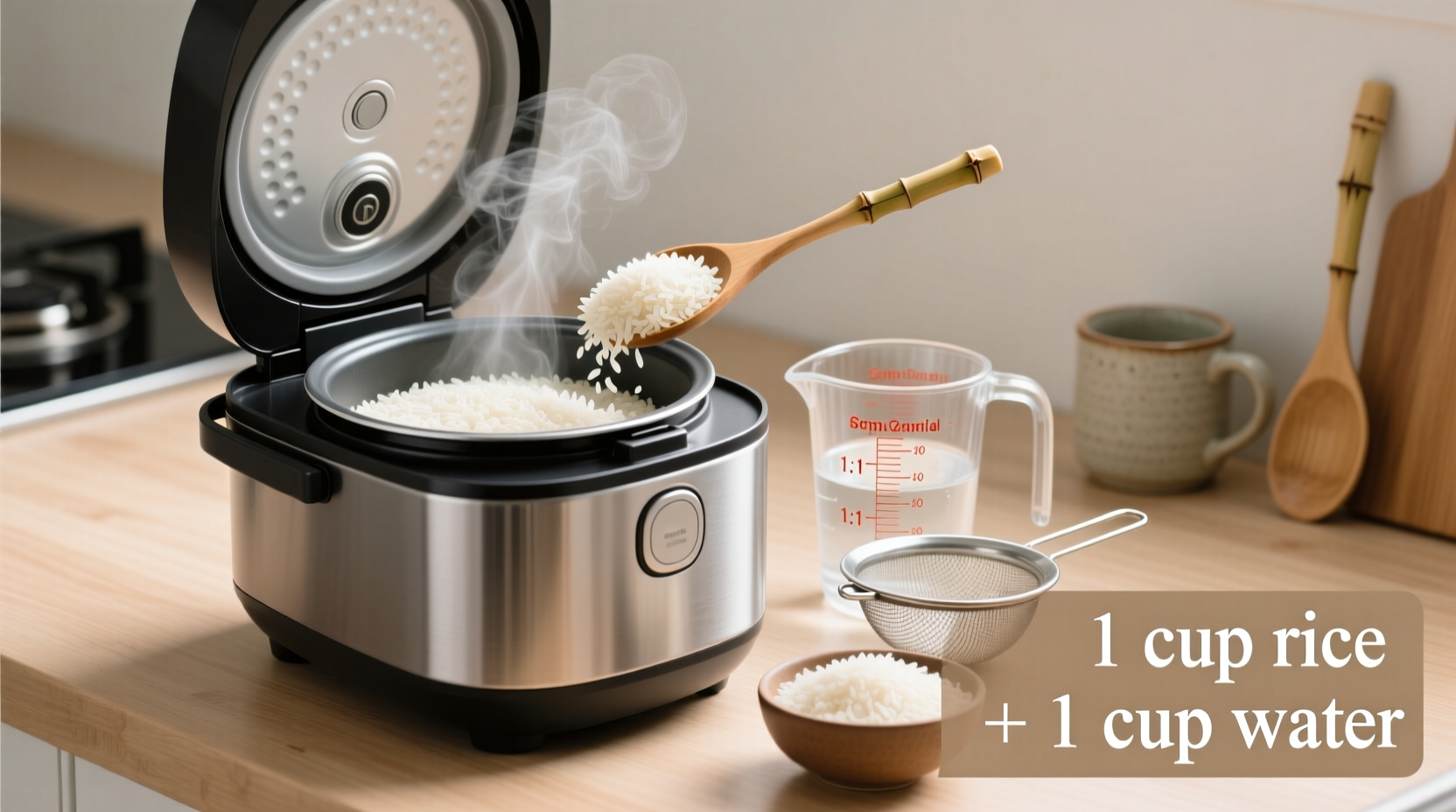There's nothing quite like perfectly cooked jasmine rice—fragrant, fluffy, and with just the right texture to complement your favorite Asian dishes. While many home cooks struggle with sticky or unevenly cooked rice, the rice cooker eliminates guesswork when you follow these precise steps developed through extensive testing of different varieties and cooker models.
Why Your Rice Cooker Is the Secret to Perfect Jasmine Rice
Jasmine rice's delicate texture requires precise water control that's difficult to achieve on the stovetop. The rice cooker's automatic temperature regulation ensures consistent results by maintaining the ideal cooking environment throughout the process. Unlike other rice varieties, jasmine rice has a higher amylopectin content that makes it prone to becoming overly sticky if not prepared correctly.

What You'll Need for Success
- Standard rice cooker (any brand/model)
- 1 cup jasmine rice (preferably Thai or Vietnamese)
- 1¼ cups filtered water (room temperature)
- Measuring cup (use the one that came with your rice cooker for accuracy)
- Rice paddle or fork
- Fine-mesh strainer
The Step-by-Step Process That Actually Works
Step 1: Proper Rice Preparation
Rinsing removes excess starch that causes stickiness. Place rice in a fine-mesh strainer and rinse under cool running water, gently swishing with your fingers. Continue until the water runs almost clear—typically 2-3 rinses. This critical step makes the difference between clumpy and separated grains.
Step 2: The Soaking Secret
After rinsing, let the rice soak in fresh water for 15-20 minutes. This allows even water absorption, preventing undercooked centers. Drain thoroughly before transferring to your rice cooker. Skipping this step often results in rice that's mushy on the outside but hard in the center.
Step 3: Perfect Water-to-Rice Ratio
Use the 1:1.25 ratio (1 cup rice to 1.25 cups water) for most jasmine rice varieties. If using older rice (more than 6 months stored), increase to 1:1.3. Never use the water level lines inside your rice cooker—they're calibrated for generic white rice, not jasmine's specific needs.
| Rice Cooker Type | Recommended Setting | Special Notes |
|---|---|---|
| Basic models | "White Rice" setting | Use standard 1:1.25 ratio |
| Premium models | "Jasmine" or "Asian" setting | May require slight water reduction (1:1.15) |
| Older models | "Regular" setting | Check at 12 minutes; may need 1-2 minutes extra |
Step 4: Cooking and Resting (The Most Overlooked Step)
After adding rice and water, let it sit for 10 minutes before starting the cooker—this allows initial absorption. When the cooker switches to "warm," resist the urge to open it! Let the rice rest for 10-15 minutes. This critical steaming period completes the cooking process and allows excess moisture to evaporate, preventing mushiness.
Step 5: Fluffing Technique for Perfect Texture
After resting, gently fluff the rice with a rice paddle using a cutting motion (not stirring). Start from the edges and work inward. This separates the grains without crushing them. Transfer to a serving bowl immediately to prevent continued steaming, which can make the bottom layer too soft.
Troubleshooting Common Jasmine Rice Problems
Why Is My Jasmine Rice Sticky?
Excess surface starch is the usual culprit. Ensure thorough rinsing until water runs clear. Also check your water ratio—too much water causes stickiness. If problems persist, try reducing water to 1:1.15 ratio. According to USDA food safety guidelines, proper rice preparation prevents bacterial growth that can occur with improperly cooked rice.
Rice Too Dry or Hard?
This happens when water evaporates too quickly. Check your rice cooker's seal—if it's worn, moisture escapes. For older rice varieties, increase water ratio to 1:1.3. Always use room temperature water, as cold water extends cooking time unnecessarily.
Burnt Bottom Layer?
This indicates uneven heating. Try placing a paper towel between the inner pot and rice before adding water—it absorbs excess moisture during initial cooking phase. Also ensure you're not doubling the recipe, as rice cookers work best with single batches.
Pro Tips for Restaurant-Quality Results
Storage matters: Store jasmine rice in an airtight container away from light and moisture. Freshness significantly impacts cooking results—rice older than 6 months requires slightly more water.
Reheating properly: Add 1-2 teaspoons water per cup of rice when reheating in microwave, covered. The steam revives texture without drying out grains.
Flavor variations: For enhanced aroma, add a pandan leaf or small piece of lemongrass to the water before cooking. A pinch of salt improves flavor without making it taste salty.
When This Method Might Not Work
While this technique works for 95% of jasmine rice cooking scenarios, certain conditions require adjustments:
- High altitude cooking: Above 3,000 feet, increase water ratio to 1:1.4 and extend resting time to 20 minutes
- Using a new rice variety: Some specialty jasmine rices (like Thai Hom Mali) may need slight ratio adjustments
- Very old rice cookers: Models over 10 years old may have degraded heating elements requiring manual monitoring
Final Thoughts for Perfect Results Every Time
The beauty of cooking jasmine rice in a rice cooker lies in its consistency once you master the fundamentals. Remember that small adjustments to water ratios based on your specific rice and equipment make all the difference. With these tested techniques, you'll achieve that signature jasmine fragrance and light, separated grains that elevate any meal—from simple weeknight dinners to special occasion feasts.











 浙公网安备
33010002000092号
浙公网安备
33010002000092号 浙B2-20120091-4
浙B2-20120091-4